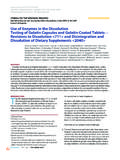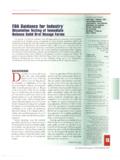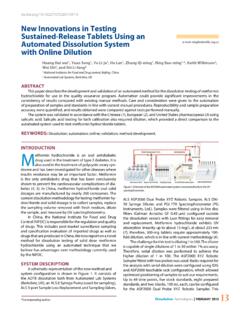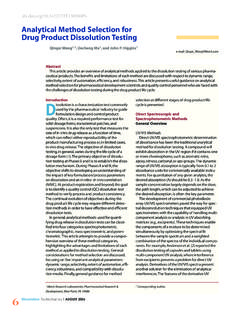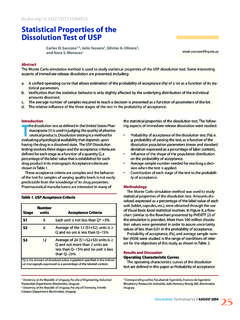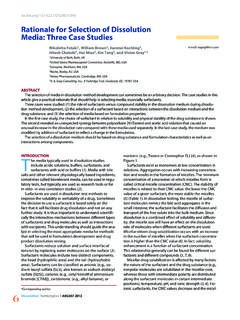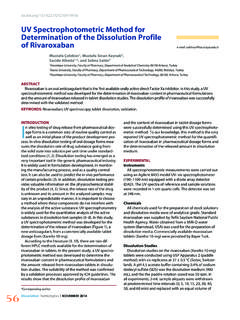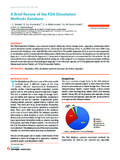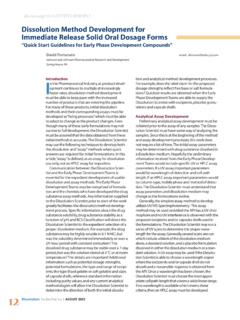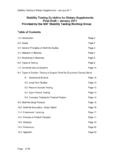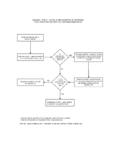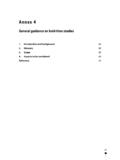Transcription of Mycophenolate Mofetil: Use of a Simple Dissolution ...
1 Dissolution Technologies | FEBRUARY 201252 Mycophenolate Mofetil: Use of a Simple Dissolution technique to assess generic formulation differences Emmanuel Scheubel1,2,*, Laurent Adamy2, and Jean Michel Cardot11 Biopharmaceutical department, Faculty of Pharmacy, University of Auvergne 28 Place H. Dunant, BP 38, 63001 Clermont-Ferrand, France2F. Hoffmann-La Roche Ltd. Pharmaceutical Division, Galenical & Analytical Development CH-4070, Basel, SwitzerlandABSTRACTM ycophenolate mofetil (MMF) is an immunosuppressive agent indicated for the prophylaxis of acute rejection in patients receiving allogeneic renal, cardiac, or hepatic transplants.
2 It is a Biopharmaceutics Classification System Class II substance that has a strongly pH-dependent solubility profile. Consequently, differences in solid-state properties, formula-tion, and manufacturing processes of MMF can lead to disparities in bioavailability between brands of the same drug. This study was conducted to compare the in vitro Dissolution profile of the original MMF innovator brand (CellCept, Roche) with available generic products. Two representative batches of CellCept 500-mg tablets and 14 different generic formula-tions were tested using different Dissolution testing scenarios simulating conditions in the proximal gastrointestinal tract.
3 These scenarios took into account stomach and small intestine media composition, surface tension, pH, increased buffer capacity, and osmolarity after food intake. Eight of the generic formulations tested passed the quality control Dissolution test (pH ) according to the specification Q = 75% after 5 min ( , all single units >80% dissolved), and 12 passed the specification Q = 85% after 15 min ( , all single units >90% dissolved). This suggests an almost homogenous Dissolution rate between formulations in an acidic environment.
4 However, at pH , large variations in the in vitro Dissolution performance between generic formulations were observed (extremes resulting in greater than 60% dissolved difference after 30 min). Marked variability was seen among the different generic formulations and the innovator brand, CellCept. In conclusion, important differences exist among the different generic formulations with regard to in vitro performance. As MMF is required for life-long use, changes in drug performance as a result of switching between formulations may have serious clinical consequences ( , organ rejection).
5 Therefore, clinical testing is necessary to evaluate the pharmacokinetics and the impact on clinical safety of a change of brands. e-mail: the patent protection of an original brand expires, healthcare systems encourage the use of generic medicines. While the economic need to limit healthcare costs by using generics is not questioned, it is important to ensure that patient health is not compro-mised. Equivalence has to be shown and is usually based on bioequivalence in healthy volunteers (1). However, as generic products are approved based on comparison with only the innovator product (2), one could argue that switching from one generic product to another might give rise to complications due to the potentially greater disparity between two generic products than between any single generic product and the innovator.
6 In particular, a switch from innovator to generic for a lifelong treatment like an immunosuppressive drug may have negative consequences (3, 4). Mycophenolate mofetil (MMF) is an immunosuppres-sive agent indicated for the prophylaxis of acute rejection in adult recipients of renal, cardiac, or hepatic transplants as well as pediatric recipients of renal transplants. MMF is currently prescribed for lifelong use. MMF is a weak base classified as a BCS Class II substance (5), exhibiting a strong pH-dependent solubility profile (solubility decreases when pH increases).
7 It is absorbed rapidly and is hydrolyzed by esterases to the active metabolite mycophenolic acid (MPA) (6). The maximum absorption (Cmax) in man is observed after approximately h in the fasted state (7).For the same API, differences in solid-state properties, formulation , excipients, or manufacturing can lead to differences in bioavailability from one finished product to another (8). Because in vivo drug Dissolution can be the rate-limiting factor in drug absorption for BCS Class II drugs (9), the use of appropriately designed in vitro Dissolution tests can potentially discriminate between formulations with different bioavailability.
8 For MMF, differences in Dissolution profiles can potentially be useful predictors of clinical differences (10) since the absorption of this drug with a very short Tmax in the fasted state is limited by the Dissolution aim of this study was to compare the originator brand CellCept 500-mg tablets with generic drug products that were commercially available worldwide using classical in vitro Dissolution testing. In addition to the * Corresponding 522/28/2012 11:36:20 AM2/28/2012 11:36:20 Technologies | FEBRUARY 201253registered NDA QC method (11), investigations were undertaken to simulate in vitro various conditions that are accounted in vivo.
9 MATERIAL AND METHODSM aterialEgg lecithin (E PC S, purity >96%) was obtained from Lipoid (Ludwigshafen, Germany), and sodium taurocholate (NaTC, 97% pure) was used as received from Prodotti Chimici e Alimentari SpA, Basaluzzo, Italy. Phosphate buffer, sodium chloride (ACS), 37% hydro-chloric acid (fumed), 85% ortho-phosphoric acid, ethanol ( ), acetic acid, as well as HPLC grade methanol and acetonitrile were purchased from Merck (Darmstadt, Germany). Water was obtained from a Milli-Q water purification system (Millipore, Milford, MA, USA).
10 Commercial milk (UHT ) with at least fat was used. Two representative marketed batches of Roche CellCept 500-mg tablets and 14 MMF generic samples from various worldwide sources were tested (please note that the generics were purchased in 2008 from countries where the patent had expired.) MethodThe Dissolution profiles were conducted using a Sotax AT 7smart apparatus (Sotax, Allschwill, CH). In addition to the suggested ANDA method for release (paddle 50 rpm in 900 mL of N HCl) (11), different media taking into account stomach and small intestine composition, surface tension, pH, increased buffer capacity, osmolarity, and pH change after food intake were investigated (12).
